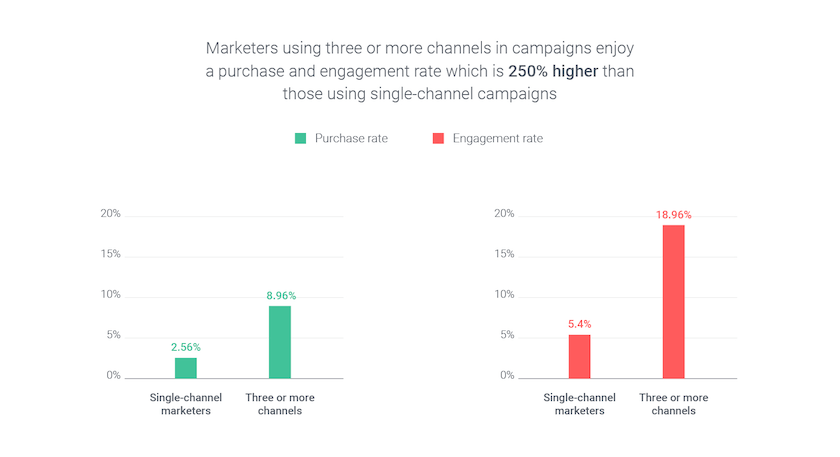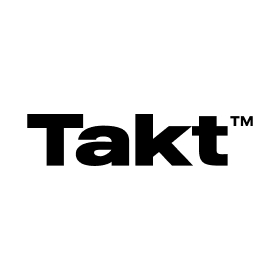
8 Key Strategies for Omnichannel Marketing
If we were to objectify the omnichannel marketing experience, we would talk about a smartphone.
Yes, you read that right. Just as how a smartphone allows users to multi-task by enabling them to mail recipients while listening to music and Googling for directions (in addition to offering a thousand different features); omnichannel marketing allows brands to multi-task by enabling them to connect with customers across diverse platforms, devices, and interactive touchpoints.
The most important aspect to remember is that – regardless of the channel/medium – omnichannel marketing approaches users keeping user behavior and real-time customer data in mind. Each channel that the customer uses (social media, email, text, etc.) is constantly being updated to the previous experience the user had with the brand.
At its core, it is a multi-channel and inter-connected sales strategy that aims at delivering seamless user experience and an inclusive purchase journey for the customers.
Omnichannel Marketing: What’s in it for you?
There’s mountains worth of research that quantifies and qualifies the benefits of omnichannel marketing that include (but are not limited to) the following:
- Greater customer retention:
Research suggests that “Brands that used three or more channels in their automation workflows enjoyed 90% greater customer retention rates.”
- Allows companies to embrace a “Customer-First” mindset – a staple in today’s “Trust Economy.”
- Higher customer engagement and purchase rate:

- Higher lifetime value: According to Google, “Omnichannel shoppers have a 30% higher lifetime value than those who shop using only one channel.”
Omnichannel Strategies to take note of for a Stellar CX
If you’re wondering about how to implement a foolproof omnichannel marketing strategy, here are some handy tips along with real-life examples to get you inspired and moving:
1. Leveraging the Right Technology
Luckily, we’re living in the Technology Age. Brands today have multiple technological tools at their disposal, such as live chat software, mobile apps, omnichannel personalization, personalized websites, video and voice calls, chatbots, emails, and texts, to build customer lists, engage in follow-ups, promote offers, address customer queries, and re-target users by way of abandoned cart reminders, order updates, etc.
2. Diving into Customer Segmentation: The First Step
The first step in the omnichannel marketing process involves gathering critical user data such as buyer preferences, perspectives, likes, dislikes, motivation, location, digital buying behavior, basic details such as contact number, email address, etc. by way of surveys, interviews, and in-depth research.
The central idea is for brands to connect with users on a deeper and personalized level while staying relevant in the user’s mind. In the long run, the brands that pay the most attention to detail emerge as clear winners in the CX world.
3. Creating a Buyer Persona
Creating a buyer persona is like building a blueprint for your building before the construction begins. Once you have all the relevant data (as outlined in the first step), you can work towards creating a buyer persona. For all intents and purposes, you can think of buyer persona as a fictionalized, most ideal version of your customer.
Bonus tip: In this type of marketing, remember that it is the customers who dictate what they will see next, instead of the brand being the deciding factor.
4. Prioritizing Channels & Devices
One of the most critical elements of any omnichannel marketing strategy is to find the right channels to engage customers with and focus on devices that the customers actively use. By leveraging the strengths of every platform and device used, this helps to deliver an integrated and holistic experience. Here’s an example of the brand, Nike that merges digital and retail experiences together to align perfectly with their target audience:
Additionally, Nike’s flagship store in NYC boasts of “Digital pick-up lockers, customization studios, instant checkout stations, and a Speed Shop that leverages local data to determine the inventory stocked on shelves:”
Did you know that the streaming platform, YouTube, helps brands re-target website visitors who have searched for specific keywords related to your offering?
5. Investing in a Strong Customer Support Infrastructure
This is where tools such as live chat and Facebook Messenger can be used to boost conversion rates and reduce customer support costs. Best of all, these tools provide 24x7x365 assistance, offer quick resolutions by way of pre-built conversations and routine FAQs, and even allow appropriate redirects so that every customer query is addressed and every customer is left feeling happy and satisfied.
Another trend that most companies follow today is to directly lead customers to the WhatsApp platform so that they can communicate with the brand in real-time – an invaluable benefit!
6. Analyzing the Efforts & Findings
Truth be told, customers need to be primed in a way that appeals to them emotionally and logically. And one of the best ways to educate, inform, and even entertain customers about your brand’s features, qualities, culture, among other things, is to dive into customer data and analyze how your users interact with the brand on various social media channels.
This can then be translated into your company’s marketing goals, objectives, and strategies and be presented to the user in the most effective manner possible (think: social media campaigns, engaging website, interesting mailers, etc.)
Take the case of [] which places content strategically to reel the readers in and assists them in the buying process seamlessly:
7. Mapping the Customer Journey
The digitally-savvy customers of today are highly-informed and trust-seeking. They prefer associating with brands that offer a consistent, genuine, and honest message across widely-used and upcoming mediums such as blogs, podcasts, etc. That said, it becomes important to segment customers based on their start- and endpoints in the buyer journey in addition to factoring all the touchpoints that lead to the purchase.
By mapping the customer journey and gauging the user’s pain-points, companies can actively modify their strategy and innovate with channels to increase sales and enhance convenience.
8. Listening to (& Acting on) the Feedback
Not paying heed to user feedback can be a fatal mistake in today’s socially-connected world. Customers expect brands to integrate their suggestions, comments, reviews, and feedback into the current offerings.
Another key element that brands need to keep in mind is to deliver meaningful and diligent follow-ups, especially with customers who seem to have abandoned carts or show interest in the offerings but don’t end up purchasing the product/services.
As you can imagine, this allows brands to cross-sell and up-sell in the future. From offering discount incentives to highlighting customer testimonials, there’s plenty you can experiment with to win back your customers.
Here’s an example worth considering: Brand, Patagonia’s Worn to Wear Stories page highlights customer’s testimonials showcasing the brand’s gear, and highlighting the customer’s lives as well:
Preferred channels for use: Messenger, text, website surveys, and emails.
Bonus tip: At this stage, you can also look for referrals and encourage customers to spread the good word.
All things considered, the end-goal of omnichannel marketing is to provide a unified and aligned customer experience (complemented with a cohesive message) – across channels, touchpoints, and user expectations. If you haven’t already, it’s time to embrace an “omni” mindset.

























